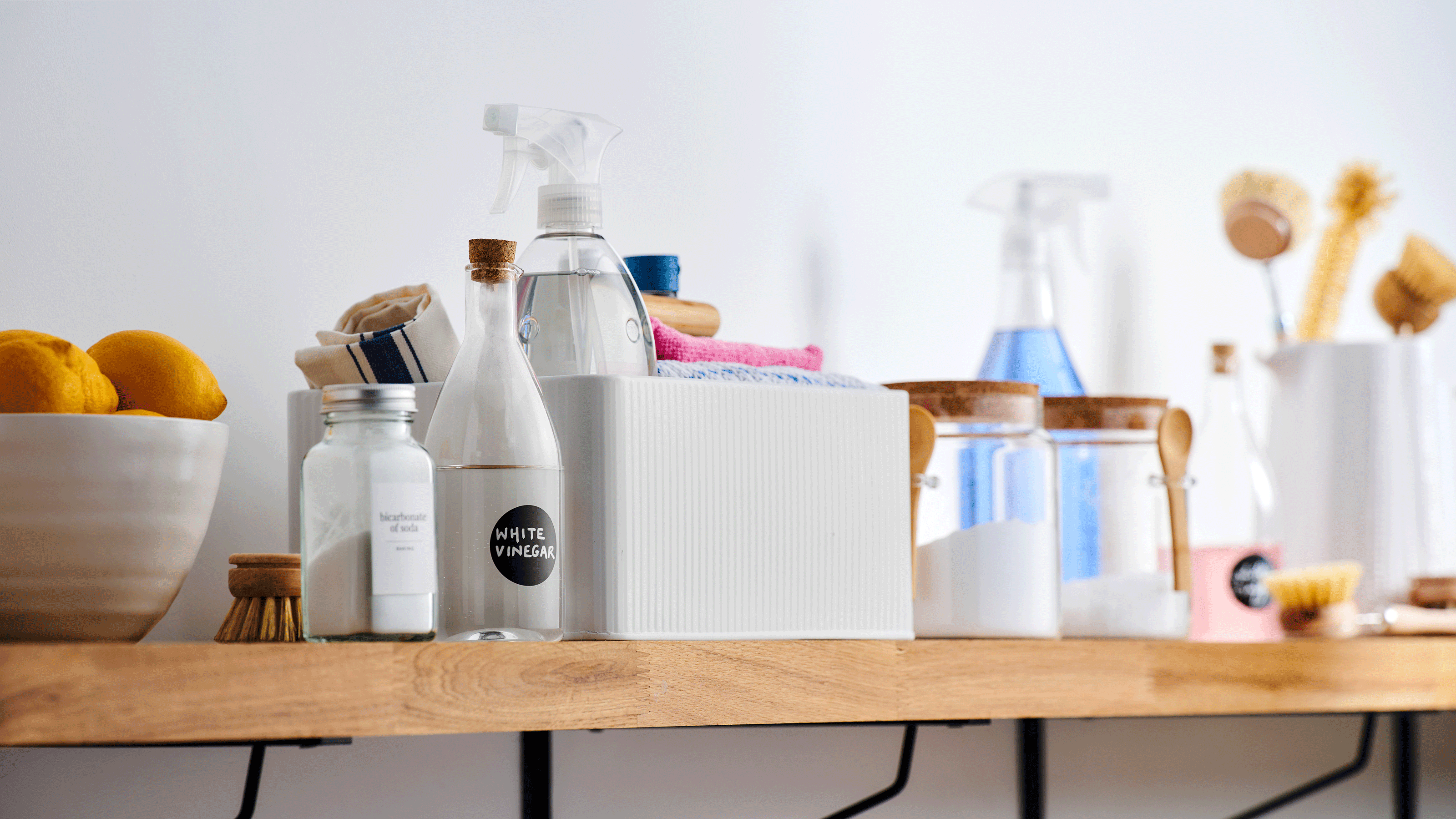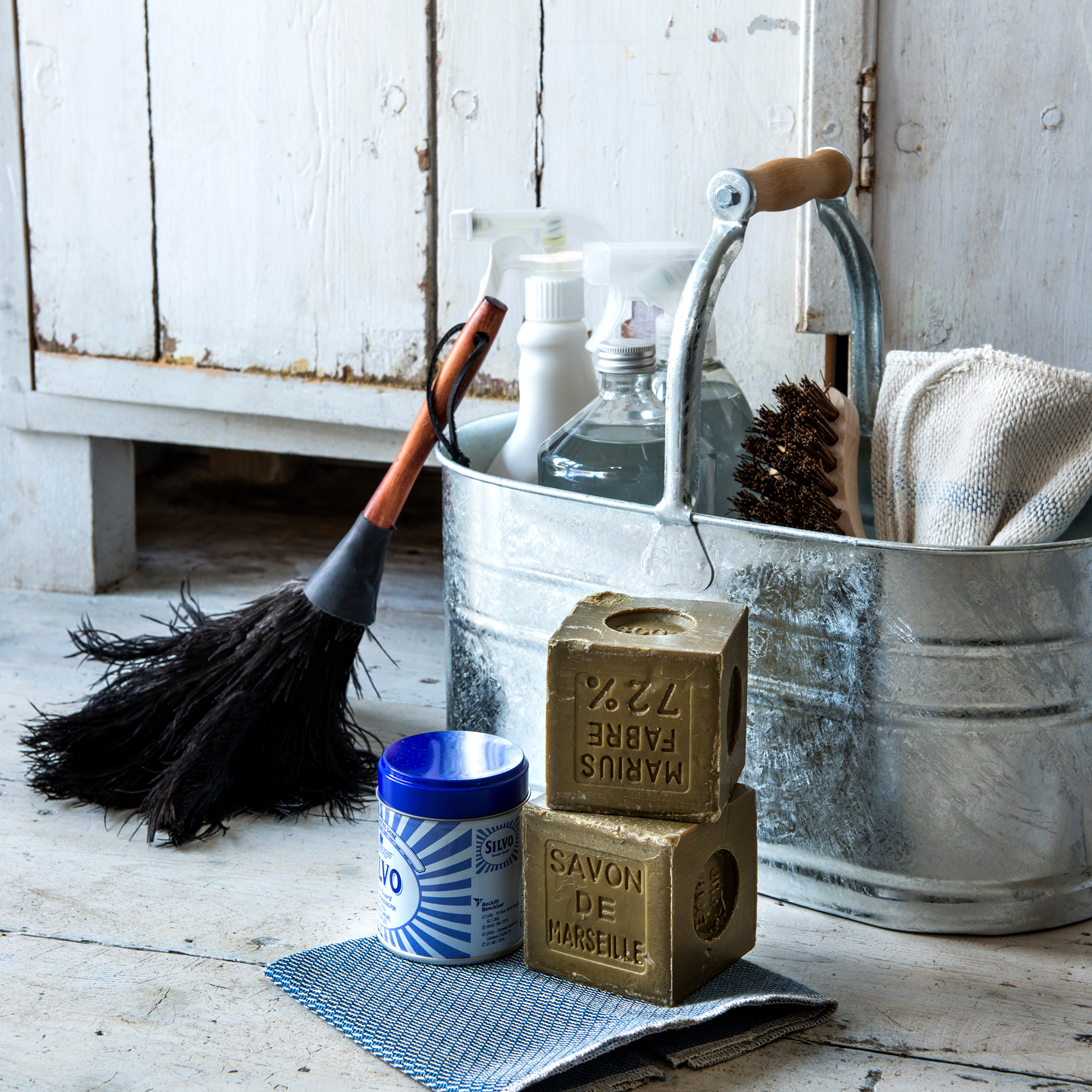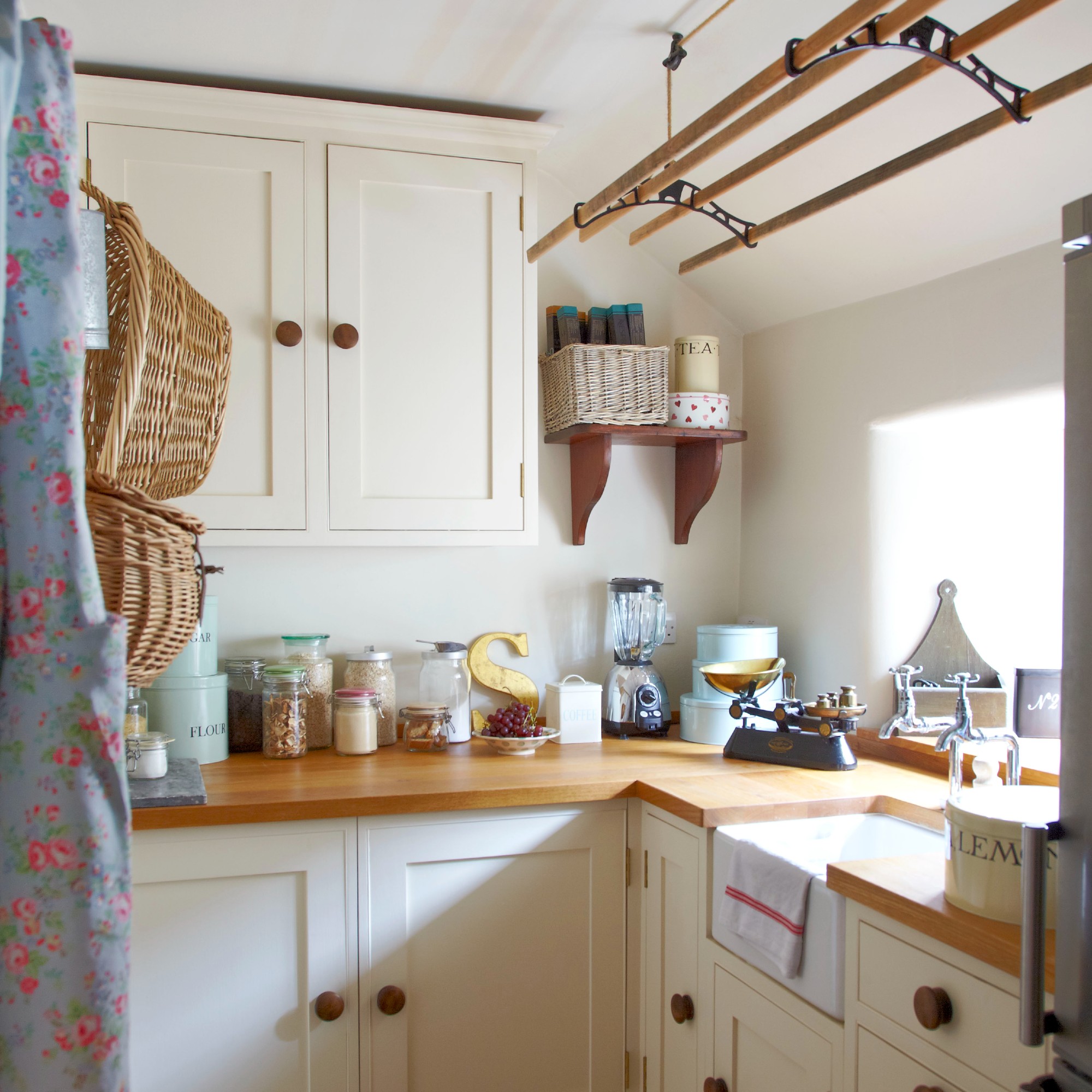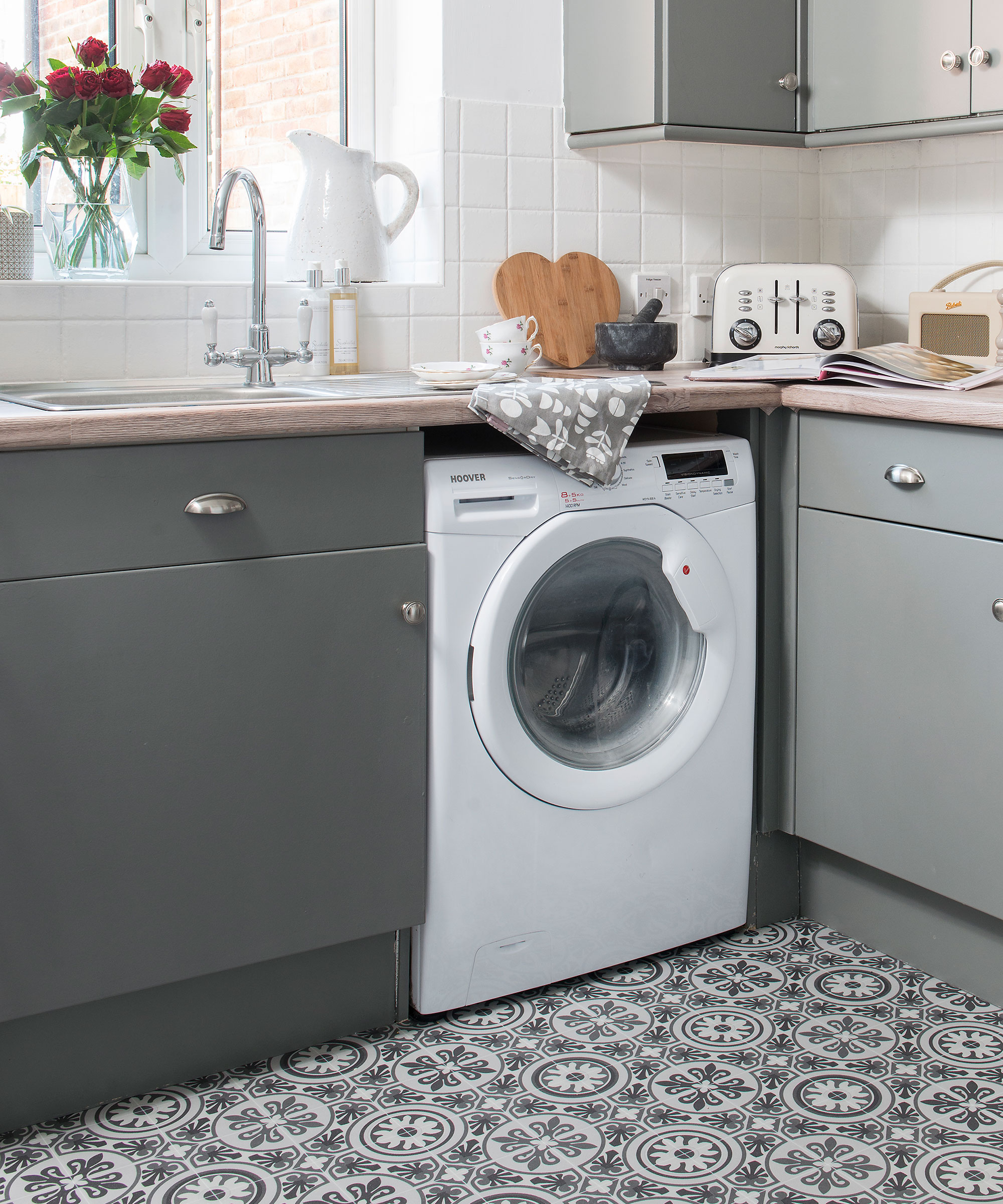7 bad cleaning habits to ditch now – according to the professionals
The experts share their verdict on the less-than-ideal cleaning habits they see often


If you're anything like us, you've likely established some sort of solid cleaning routine over the years – using both your favourite cleaning products, and some new ones ever so often – that you don't tend to question or change much (if ever). You might even have a daily cleaning schedule, or even an annual cleaning calendar that you stick to, and you probably clean things in the same way you did ten years ago.
Of course, there's nothing wrong with any of the above – but it's worth being aware that you may have unknowingly picked up a few bad habits along the way that could be damaging to your home and even your health.
It certainly makes sense to review our cleaning habits every once in a while, to ensure we're not doing anything that might be harmful, or just plain ineffective. So what are the bad cleaning habits we might all be guilty of, and why should we be avoiding them?
7 bad cleaning habits to ditch now
Establishing good cleaning habits and ditching ones that aren’t so great is essential for a home that not only looks good, but that is also healthy for you and your loved ones. 'In a nutshell, good hygiene practices help prevent germs from being spread, and protect us from getting poorly,' Nay Gulsan, smol’s Formulation Expert explains.
But bad cleaning habits can also damage your property, and may even be a serious waste of money. So which should you be looking to ditch ASAP, according to the experts?
1. Not cleaning your tools

The tools we use to clean our homes also need the same care as the rest of our home, explains Jess Farinha, founder of London House Cleaner.
She explains that a common bad habit people have is to clean – perhaps with a microfibre cloth, a sponge, or a small brush – and then simply leave these tools to sit with the dirt still on them, until the next time they're needed.
Sign up to our newsletter for style inspiration, real homes, project and garden advice and shopping know-how
'Dirty cleaning tools can even spread more dirt and germs,' she explains. 'Not only that, but not cleaning the tools themselves can also make them ineffective for when you dive into your next cleaning session.'
Highlighting some of the most often-neglected cleaning tools, Jess says, 'Mops, as well as cloths, require regular cleaning to make sure that they are not just moving dirt from one place to another. So you should regularly wash and disinfect these cleaning tools. They should also be dried properly after use, to ensure no mildew forms.'
2. Using too many cleaning products

If you’re a keen follower of the many ‘cleantok’ videos circulating on social media, and love watching influencers scrub their homes, you may also be guilty of treating yourself to multiple viral cleaning products on a regular basis – convinced that the next one will be the one to get your home gleaming.
However, cleaning expert Laura Dent, founder of So Fresh & So Clean, insists that getting into the habit of buying and using too many different cleaning products is something you’ll want to avoid.
'Don’t get me wrong; as a professional cleaner I still love to walk down the cleaning aisle to see what’s new, and it’s all too easy to get caught up in the pretty packaging and colours,' she says.
'However, it’s better for your health, mind and pockets to use less cleaning products and make the ones you do have, do more for you.'
She points out that more often than not, small amounts of natural cleaning products will do the job just as well as multiple different shop-bought options. ‘For example, cleaning with a white vinegar mix will shine up all your windows, glass, sinks and taps, and it can also be used as a light descaler, degreaser and disinfectant,’ Laura explains. 'White vinegar can also be used to clean the inside of your washing machine and dishwasher if you put a hot clean rinse on – so that’s five different products reduced to one already!'
3. Using feather dusters

It might seem inconsequential, but one of the biggest – yet most common – ‘bad’ habits Jess sees regularly is using a feather duster to clean surfaces, blinds and dusty corners.
Though they’ve become a cleaning go-to for many people over the decades, she explains, 'Feather dusters usually just displace the dust from one area to another. And importantly, they can be problematic for individuals with allergies, as they can kick the dust in the air far too easily.'
Instead, she suggests an easy swap that will mitigate the problem entirely. 'You should use a damp towel or a microfibre duster , that can actually trap the dirt instead of spreading it around your home.'
Using a damp towel is a surefire way to get rid of pesky dust mites, too.
4. Not wearing gloves
'Another bad habit I often see is not wearing gloves as you clean,' Laura says.
This is because – though many of the cleaning products we purchase in store are safe to use around our homes, and are effective at tackling dirty spots – they’re usually not meant to come into direct contact with your skin.
'Your skin will absorb chemicals and toxins which can cause many health issues, both short and long term – such as redness, itchiness, or even the development of issues like eczema,' Laura points out. 'Protect your hands and forearms at all times when cleaning with long gloves, even if you’re just giving the bathroom loo and sink a quick wipe around.'
5. Not reading the cleaning instructions

Nay explains that, while easily done, one of the worst cleaning habits many of us have is neglecting to properly read the instructions or directions on your chosen cleaning products – and particularly on new ones that you haven’t used before.
'Following directions not only keep us and our environment safe, but it’ll also make sure you get the best performance out of the product you’re using,' she says.
In fact, Laura explains that this is one habit which should be taken seriously, in order to prevent any possible health hazards.
'Many cleaning products will tell you to never mix one product with another, and this is something it is vitally important to avoid. For example, there has been a trend on a certain social media platform recently, where users were using around 10 different products at a time to clean a toilet pan, which is incredibly dangerous,' she says.
'Most toilet cleaners either have a bleaching chemical or a descaler in them, and when these are mixed together it can create a chlorine gas, which is extremely toxic – in fact, it was a substance used to kill during the First World War!'
6. Neglecting to move furniture

Hands up - who else simply vacuums or dusts around your sofa, armchairs, and dining table, instead of actually moving them out of the way to get into all of the often-missed nooks and crannies?
We certainly are; but according to Paul Bagwell, CEO and Founder of Halo, it’s a bad habit that will leave you with a less-than-clean home that could even develop staining, particularly if you have carpets (yes, even if you're using one of the best vacuum cleaners).
'Many of us are guilty of simply vacuuming around our furniture, but this can leave a couch- or chair-shaped outline of dust on your floors,' he says. 'To get the most thorough clean of your floors possible, be sure to nudge your furniture fixtures to the side and vacuum their spots on the floor as you go.'
This, he also explains, is especially important for a certain group. 'For pet owners, getting into the corners and crevices around furniture is a must – so be sure to also use your vacuum’s attachments to remove all hair and dander,' Paul says.
7. Cleaning certain tools at too low a temperature

One bad habit that Nay explains that she sees often, is not washing regularly-used items such as tea towels, towels, and microfibre cloths at a high enough temperature.
While it’s wise to wash some items – such as delicate clothes – on a low temperature (to avoid damaging the quality of the item and to lower the environmental impact of the wash) cleaning items, like the above, should be washed on high to ensure they are adequately disinfected.
'It’s a common habit, but you shouldn’t be washing things like tea towels alongside your normal low temperature washing,' Nay says. 'As we use tea towels in the kitchen, it’s important to ensure all germs are killed to maintain good hygiene so – keeping the care label in mind – a separate wash at a higher temperature is advised.'
Take this as your sign to shake up that cleaning routine.

Amy Hunt is an experienced digital journalist and editor, now working in a freelance capacity specialising in homes and interiors, wellness, travel and careers. She was previously Lifestyle Editor at woman&home, overseeing the homes, books and features sections of the website. Having worked in the industry for over eight years, she has contributed to a range of publications including Ideal Home, Livingetc, T3,Goodto, Woman, Woman’s Own, and Red magazine.